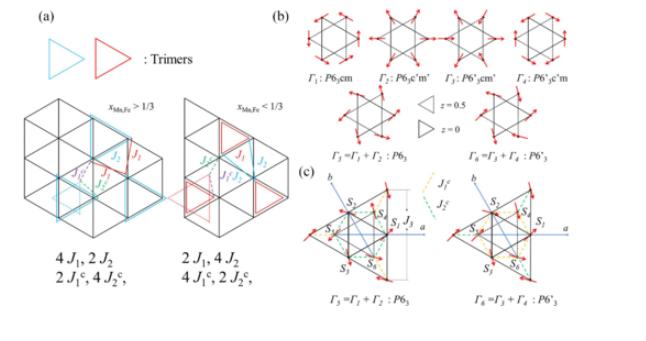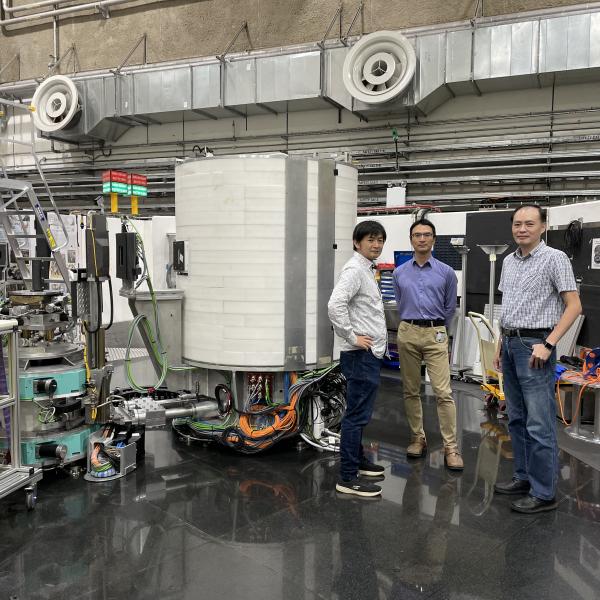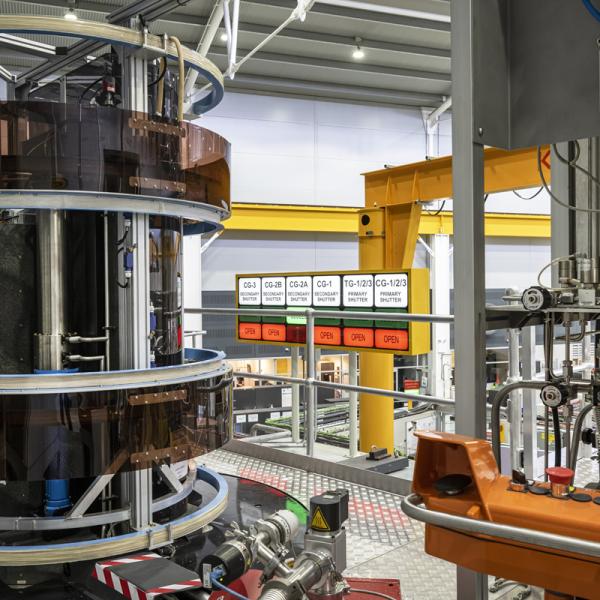

Published on the 13th November 2024 by ANSTO Staff
In this study, researchers from a large international team including ANSTO, investigated the magnetic properties of two unique 2D triangular lattice antiferromagnetic materials (2D-TLHAF)* using various neutron scattering techniques.
Multiferroic materials are being explored for use in advanced computers. Their quantum properties make them suitable for future computing applications, as they can manage and process the significantly larger volume of information more efficiently. Additionally, the unique properties of 2D magnets, such as flexibility and stackability, an ability to control layers of quantum devices or materials to create more efficient systems, have application in magnetism and spintronics.
The materials, hexagonal h-Lu0.3Y0.7MnO3 and h-Lu0.47Sc0.53FeO3, are a type of frustrated antiferromagnet, which means that the spins of the atoms in the material cannot all align in a way that minimises their energy due to the triangular arrangement of the lattice.
Lead author, instrument scientist Dr Shinichiro Yano said the materials exhibit fascinating and complex magnetic behaviours which has been difficult to investigate by conventional neutron scattering techniques.
Their unique magnetic properties and nontrivial quantum effects that can be observed and measured from the cold triple axis spectrometer Sikawith a setup of polarized neutrons and other neutron instruments at the Australian Centre for Neutron Scattering.
The study, published in the American Physical Society Journal, reports two irreducible representations* to describe their magnetic structure.
“These mathematical concepts help us understand how the magnetic moments (spins) of the atoms in these materials are arranged and how they interact with each other."
Dr Andrew Manning, Helium-3 Polarisation instrument scientist said, “Polarized neutron scattering has shown that accurately describing the magnetic structures of a 2D-TLHAF requires the use of two irreducible representations, rather than relying on the assumption that the system undergoes spin reorientation when using only one irreducible representation."
Instrument scientist Dr Chin-Wei Wang said, “If we use two irreducible representations to describe these magnetic structures, the spin reorientations reported in these compounds are not as drastic as previously claimed.”
The study also investigated the spin-wave dispersion of both materials based on these magnetic structures. A spin wave is a propagating disturbance in the ordering of a magnetic material.
The study also provides evidence of interplanar interactions in one material, h-Lu0.3Y0.7MnO3, which are absent in the other, h-Lu0.47Sc0.53FeO3.
“Interplanar interactions were thought to be the key to understanding spin reorientations. However, as shown in the paper, interplanar interactions were absent for one of the materials we studied," said Dr Yano.
These findings also offered fresh insights into the magnetism of spin reorientations and the source of the multiferroicity of this 2D-TLHAF system.
“Even though the two materials are similar in terms of crystal and magnetic structures, the source of multiferroicity and the origin of spin reorientation could be different,” said Dr Yano.
Collaborating organisations included National Synchrotron Radiation Research Center (Taiwan), New Jersey Institute of Technology (US), Comprehensive Research Organization for Science and Society (CROSS) (Japan), and High Energy Accelerator Research Organization (KEK) (Japan).
*Γ1 (P63cm) and Γ2 (P63c’m’) for h-Lu0.47Sc0.53FeO3, Γ3 (P6’3cm’) and Γ4 (P6’3c’m) for h-Lu0.3Y0.7MnO3
DOI: https://doi.org/10.1103/PhysRevB.110.134444
Quantum computing is identified as a priority sector in the 2024 National Science Statement.




